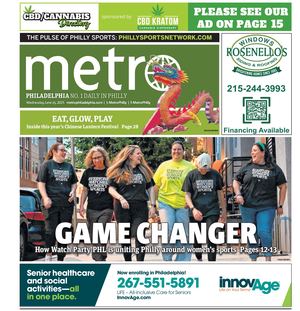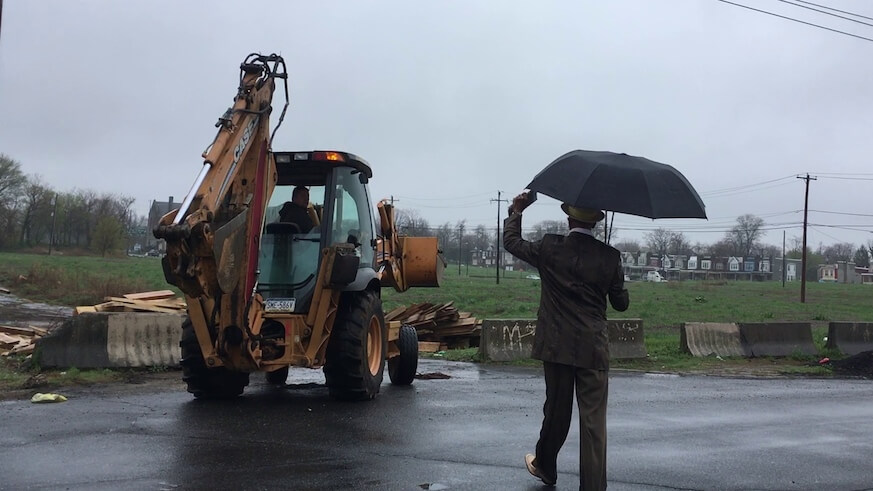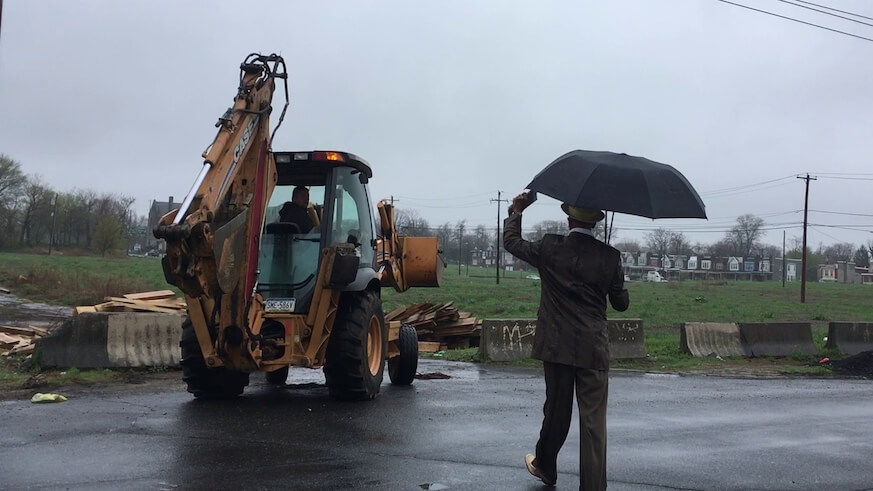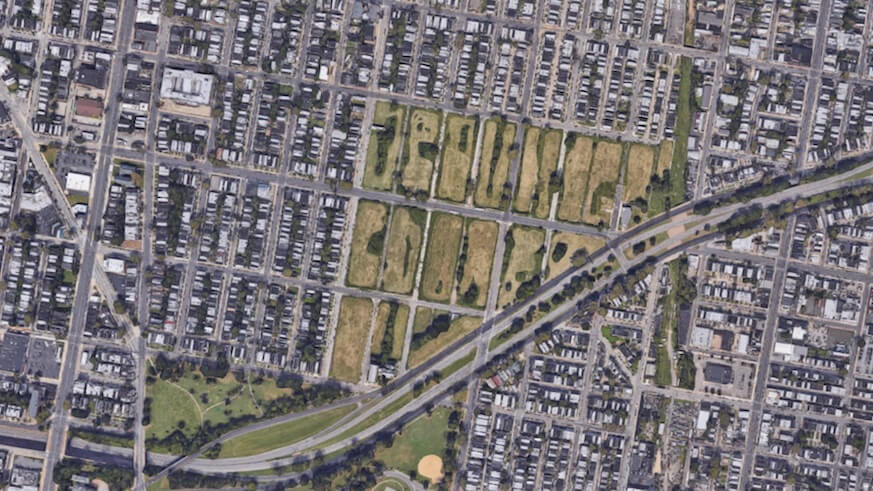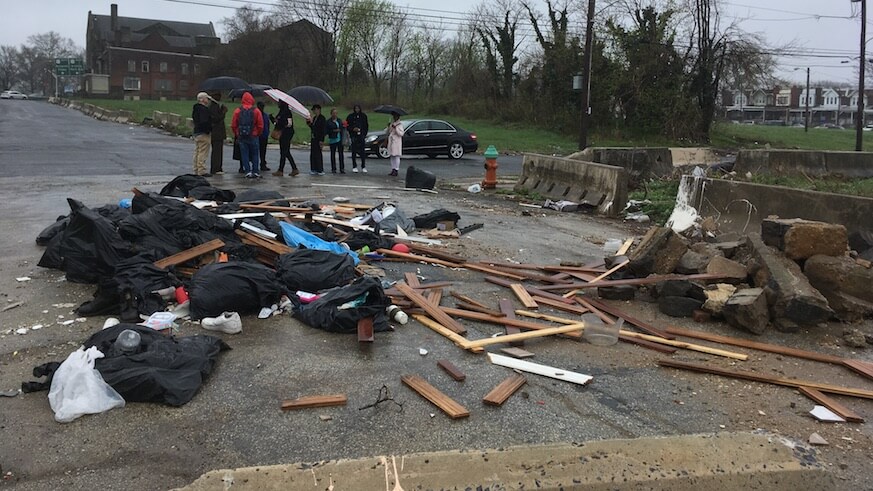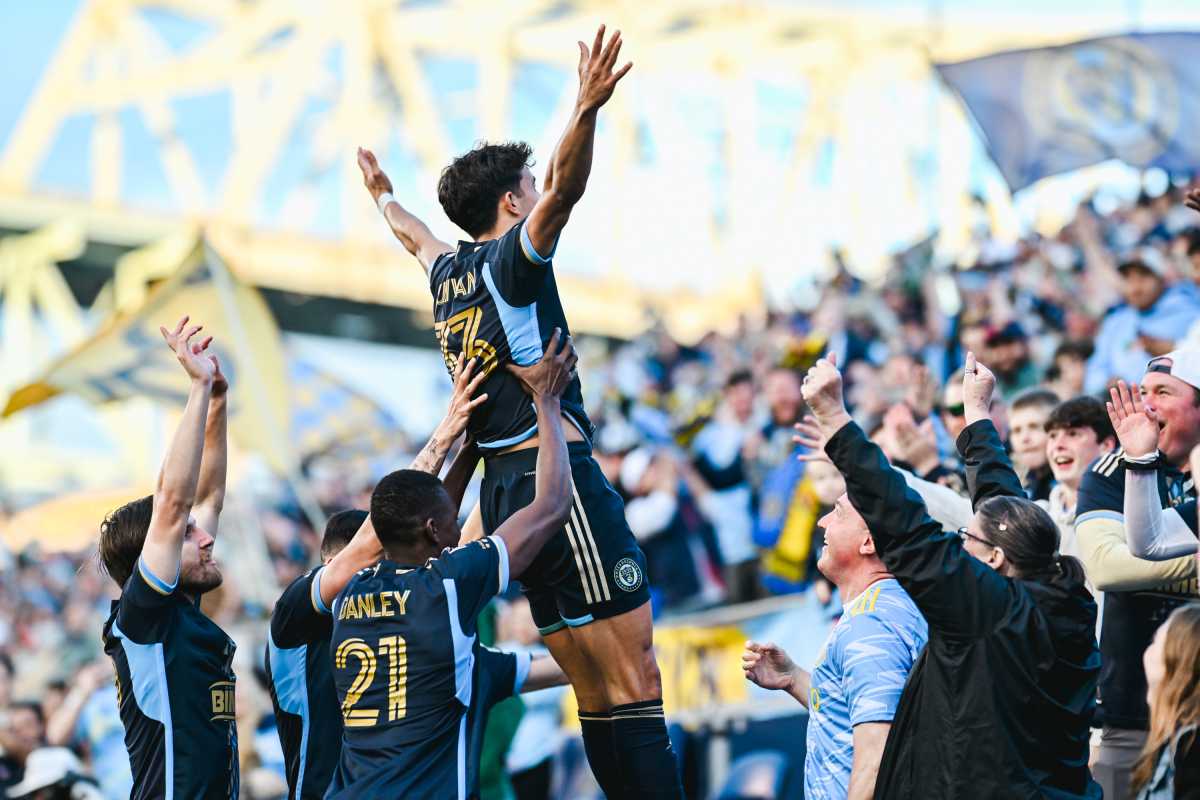City Councilwoman Cindy Bass is looking for some names. On Wednesday, while the 8th District Councilwoman’s Trash Task Force was surveying the abandoned, blighted Logan Triangle with neighbors, they saw a contractor brazenly dumping materials right in front of them — then defend himself by saying he works for the city. In response, Bass planned to call an emergency meeting Thursday morning with every city agency that might be paying people who dump their garbage on city land.
“I’m really furious this happened, and that this is possibly people who are being paid by city tax dollars who are dumping in our neighborhoods,” Bass said. “I’m just really shocked that they’d be so blatant as to be dumping right in front of people, but that just goes to show how out of control dumping and the lack of respect for our neighborhoods is. … Some neighborhoods are just considered dumping grounds, and that’s OK. It would never happen in Chestnut Hill or Mt. Airy.”
With 35 acres of unused land off of Roosevelt Boulevard, made up mostly of coal ash fill and deemed uninhabitable since houses had sunk and a gas line exploded in the ’80s, the Logan Triangle has been a dumping ground for years. While locals have clamored for enforcement and organized clean-ups, any progress is quickly covered up by new piles of garbage, they said. Bass’ plan to stop the madness is simple: name and shame those responsible.
“Look for us to begin publicly shaming, humiliating, embarrassing and naming anybody who disrespects our neighborhoods,” Bass said. “If we find a contractor who is doing this, we’re going to work extra hard to make sure they never get a city contract again.”
That awkward moment when a contractor drove up and dumped a load in Logan Triangle right in front of @CindyBassPhilly‘s Trash Task Force, then says he’s working for the city. https://t.co/UgZGDKCy5F pic.twitter.com/WctOw1Gy4z
— Sam Newhouse (@news_haus) April 26, 2018
During the tour on Wednesday, residents who joined Bass’ Trash Task Force bemoaned the fate of what some recalled as a once vibrant neighborhood, but one unfortunately built on coal ash landfill used to cover over the former Wingohocking creek bed. It was declared uninhabitable and residents left en masse in the ’80s.
“Thirty-something years, nothing has been done,” said Cecil Hankins of the Logan Community Development Corporation (CDC). “A lot dumped on by contractors, this is what the neighborhood has become.”
Sandra Harmon, an outreach coordinator at Nicetown CDC, lives on 11th Street by the Triangle and said she sees new loads of tires, debris and construction materials pop up overnight, and the city has been unable to stop the problem.
“It’s as if they didn’t do anything. There’s no enforcement,” she said. “Until a few people get caught and prosecuted to the fullest extent of the law, it’s laughable.”
Residents and Task Force members discussed ideas ranging from security cameras to getting tag numbers off dumpers and additional lighting to possibly removing the concrete barriers around the Triangle, intended to keep dumpers out, but which residents said dumpers instead use to hide their trash.
“One time, there was so much trash, it was all over, couches, beds, clothes, we couldn’t even get through to the church, it was impassable,” said Pastor William James Scott III of Harold O. Davis Memorial Baptist, which is adjacent to the triangle. “Members of the church were down and depressed. Some came to me crying, saying, ‘There is no respect for the church.'”
Rev. Raul Leduc of Iglesia Sion Church, on the other side of the triangle, agreed and said his church has also been victimized.
“They don’t care where they dump. They come at night, make a quick drop and get out,” he said. “We’ve been calling the city for 10, 15 years now.”
The Philadelphia Redevelopment Authority (PRA) acquired the Triangle in 2012. The Goldenberg Group, an exclusively commercial developer, was identified as a possible developer of the site in 2015. The PRA will bring a new Logan Triangle redevelopment plan, which includes a permanent home for Philadelphia Youth Basketball to the City Planning Commission in May.
Some residents are leery of the prospect of the site being turned into new housing, like Marion Johnson and daughter Tori Johnson, both of the Logan CDC, who expressed concern the Triangle’s redevelopment could bring new rental units to the area.
“That’s not going to benefit the neighborhood,” Tori Johnson said. “That’s not going to build wealth in the black community.”
The PRA has not completed its plans for the area and continues examining social and economic impact of any prospective plans, a spokeswoman said.
Bass said she would work with the community on finding a suitable development, but in the meantime, she wants to keep the trash out.
“It’s become an eyesore and then some for people who feel they can just do whatever,” Bass said. “While it’s not developed, it doesn’t have to be a dumping ground.”
History of an ash heap
Logan Triangle is bordered by 6th and 11th streets, with Loudon Street to the north and Roosevelt Boulevard to the south. Once occupied by nearly 1,000 homes, it has been abandoned for nearly three decades since a gas line blew, and authorities determined the coal ash fill and debris the land was made up of weren’t safe enough for residential use.
It was originally occupied by the Wingohocking Creek, an instrumental component of the local watershed. But the creek was encased in pipes and turned into a sewer in the 19th century. In the 1920s, homes were built atop the fill over the Creek, but homes began sinking, and after a gas explosion in 1986, the city used $38 million, mostly in federal funding, to buy some 950 homes while compensating and relocating roughly 5,000 residents. The last structure on the triangle was razed in 2001. It is one of the largest open-air vacant lots in Philadelphia.
Writer Ken Finkel of Philly History Blog called Logan Triangle “a 35-acre, no-man, no-house zone, a monument to a century of greed, ineptitude and failure, the likes of which is unprecedented in urban history.”
